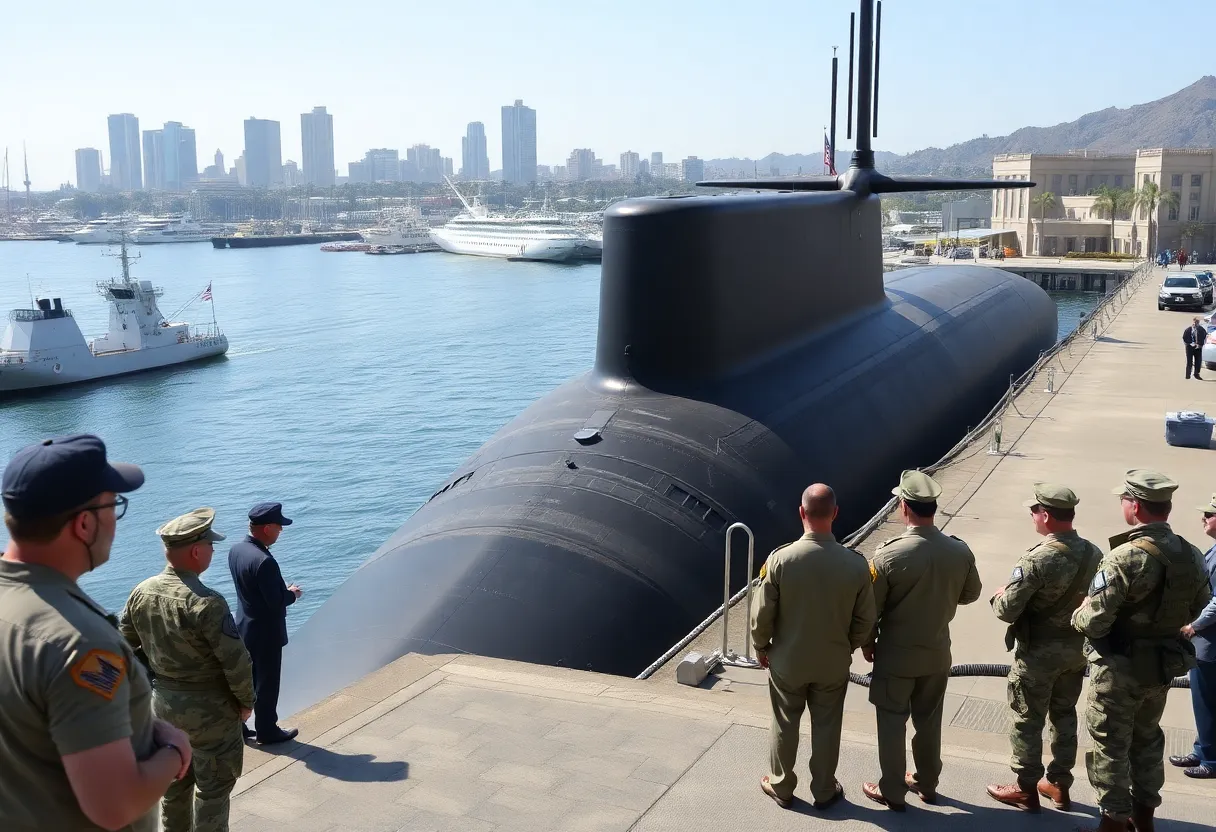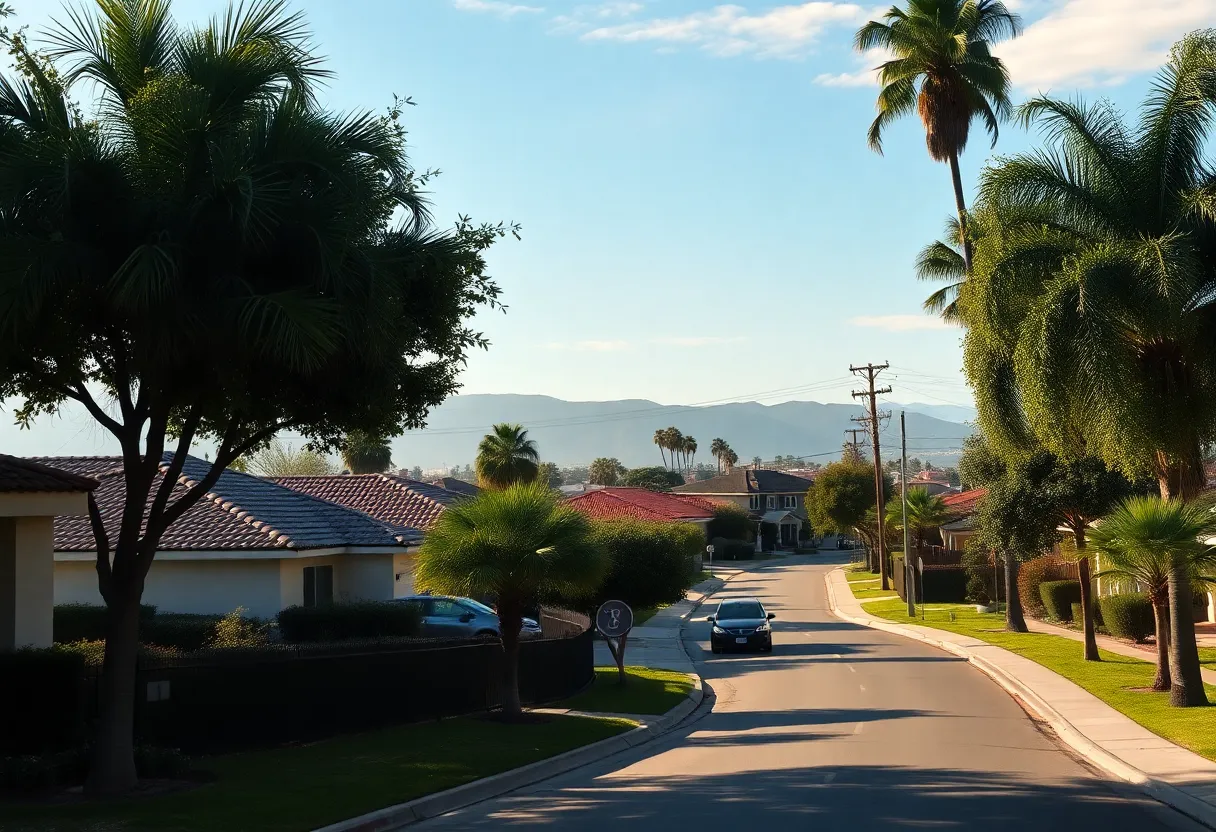News Summary
City leaders in Coronado, led by Mayor John Duncan, recently toured the USS Greeneville submarine to acknowledge the vital role of Navy personnel in ensuring community safety. They also visited the San Diego Emergency Control Center to understand the Navy’s efforts in crisis response. The event highlighted the ongoing commitment of military and local officials to protect residents. Additionally, recent heavy rainfall has led to beach closures due to pollution, prompting collaboration between the Navy and environmental agencies to address transboundary pollution.
Coronado – City leaders, including Mayor John Duncan, recently toured the USS Greeneville, a Los Angeles-class fast-attack submarine, on April 14. The visit aimed to recognize and appreciate the efforts of Navy personnel and civilian employees in upholding community safety and defense in both Coronado and the greater San Diego area.
During the tour, Duncan highlighted the advanced monitoring and security measures implemented by the Navy to promptly identify and respond to emergencies. The delegation also visited the San Diego Emergency Control Center, which plays a vital role in centralizing communication and coordinating responses during crises, further demonstrating the commitment of military and local officials to community protection.
Duncan expressed that the tour was not only reassuring but also enlightening, emphasizing the importance of the Navy’s role in ensuring the safety of local residents. He extended gratitude for the continuous dedication shown by military personnel and civilians in safeguarding the communities around San Diego.
A significant return in the naval community took place on May 15, when the USS Alexandria concluded its 7-month deployment and returned to San Diego. Shortly before that, the USS Theodore Roosevelt, a Nimitz-class aircraft carrier, returned to its homeport in Coronado on October 15 after completing a 9-month deployment. The Theodore Roosevelt Carrier Strike Group (TRCSG) has been actively involved in operations spanning the Indo-Pacific and U.S. Central Command regions amid rising tensions in the Middle East.
The TRCSG’s capabilities are augmented by the involvement of over 6,000 sailors who can execute a wide range of missions across global waters. Their recent operations included dual carrier exercises, participation in Exercise Valiant Shield 2024, and various bilateral and multilateral maritime drills with allied nations. Throughout the deployment, TRCSG accomplished an impressive 9,000 sorties, logged 21,000 flight hours, and conducted 28 replenishments-at-sea while traversing more than 71,000 nautical miles, visiting key ports such as Bahrain, Diego Garcia, and Singapore.
In a future mission, sailors from Coronado are set to deploy to Gaza to construct a temporary pier enabling the delivery of 2 million meals of humanitarian aid per day. This project forms part of the Joint Logistics Over-the-Shore (JLOTS) mission, which is being led by the Army’s 7th Transportation Brigade. Approximately 260 sailors from Naval Beach Group 1 will spearhead the construction of the roll-on, roll-off discharge facility off the Gaza coast, ensuring that vital aid can be effectively transported to shore.
Previous collaboration between the Army and Navy during Exercise Talisman Sabre serves as a foundation for this mission. The floating dock structure is anticipated to become operational within 60 days, ensuring that humanitarian efforts can commence without deploying ground forces in Gaza.
In other news, recent heavy rainfall in the region has resulted in extended beach closures across Imperial Beach, Silver Strand Beach, and Coronado Beach due to elevated bacteria levels caused by sewage and urban runoff. In response to these conditions, the Navy is adhering to established safety protocols, which include delaying or modifying in-water training exercises during water quality advisories.
The Department of the Navy is actively collaborating with environmental agencies to tackle and alleviate transboundary pollution stemming from the Tijuana River. A significant initiative involving the construction of sanitation infrastructure along the shores of San Diego and Tijuana is in development, jointly financed by both the U.S. and Mexican governments. This project is expected to cost approximately $474 million and represents a concerted effort to promote the health and safety of coastal communities.
Deeper Dive: News & Info About This Topic
HERE Resources
Veterans Protest Trump’s VA Reforms in Coronado
San Diego Hosts 38th Annual Navy Bay Bridge Run/Walk
Emerald Keepers Address Coronado’s Pollution Crisis
Imperial Beach Calls for Federal Action on Tijuana Sewage Crisis
Imperial Beach Leaders Demand Federal Action on Sewage Crisis
Coronado Declares Local Emergency Over River Pollution
Coronado Celebrates 10th Anniversary of Avenue of Heroes
Analysis of National Security Presented at Coronado Roundtable
Coronado Celebrates Valor App Launch for Military Families
Recent Arrests Highlight Crime Concerns in Coronado
Additional Resources
- Coronado Times: USS Theodore Roosevelt Returns After 9-Month Deployment
- Wikipedia: USS Theodore Roosevelt (CVN-71)
- Coronado Times: Coronado Sailors Deploying to Gaza
- Google Search: Humanitarian Aid Gaza
- Naval Technology: The Biggest Naval Bases in the US
- Google Scholar: Naval Bases USA
- Coronado Times: SURFOR Establishes Unmanned Surface Vessel Squadron USVRON Three
- Encyclopedia Britannica: Unmanned Vehicle
- Coronado Times: Tijuana River Wastewater Flow Affects Navy Training Operations
- Google News: Tijuana River Water Pollution

Author: STAFF HERE CORONADO
The Coronado Staff Writer represents the experienced team at HERECoronado.com, your go-to source for actionable local news and information in Coronado, San Diego County, and beyond. Specializing in "news you can use," we cover essential topics like product reviews for personal and business needs, local business directories, politics, real estate trends, neighborhood insights, and state news affecting the area—with deep expertise drawn from years of dedicated reporting and strong community input, including local press releases and business updates. We deliver top reporting on high-value events such as the Coronado Island Film Festival, productions at Lamb’s Players Theatre, community workshops at John D. Spreckels Center, and iconic celebrations at Hotel del Coronado. Our coverage extends to key organizations like the Coronado Chamber of Commerce and Visit Coronado, plus leading businesses in hospitality, dining, and tourism that drive the local economy. As part of the broader HERE network, including HERESanDiego.com, HEREHuntingtonBeach.com, HERELongBeach.com, and HERELosAngeles.com, we provide comprehensive, credible insights into Southern California's dynamic landscape.





